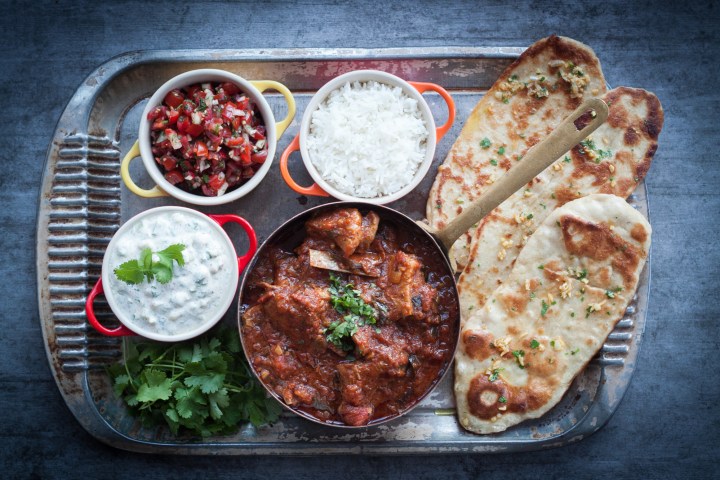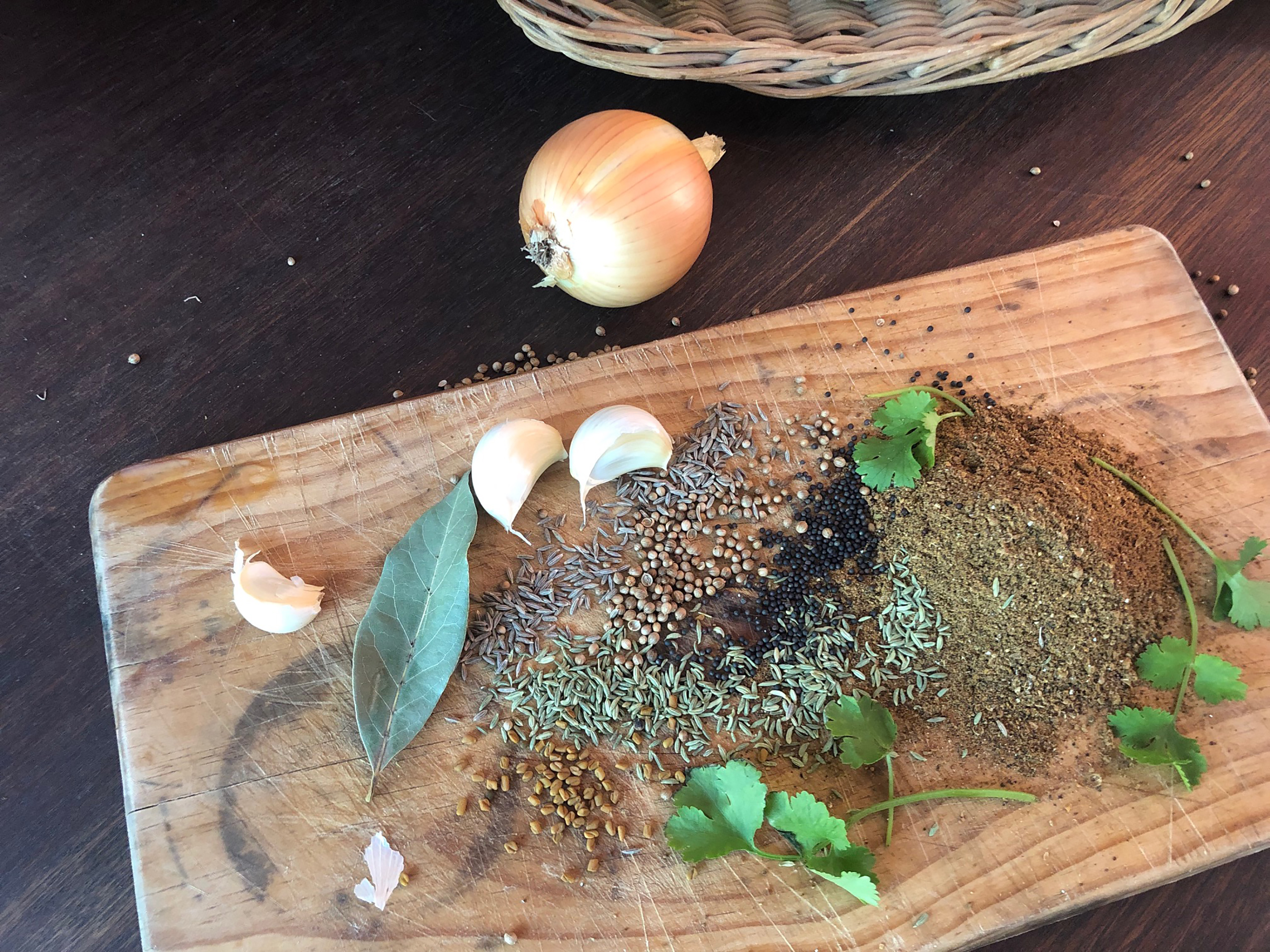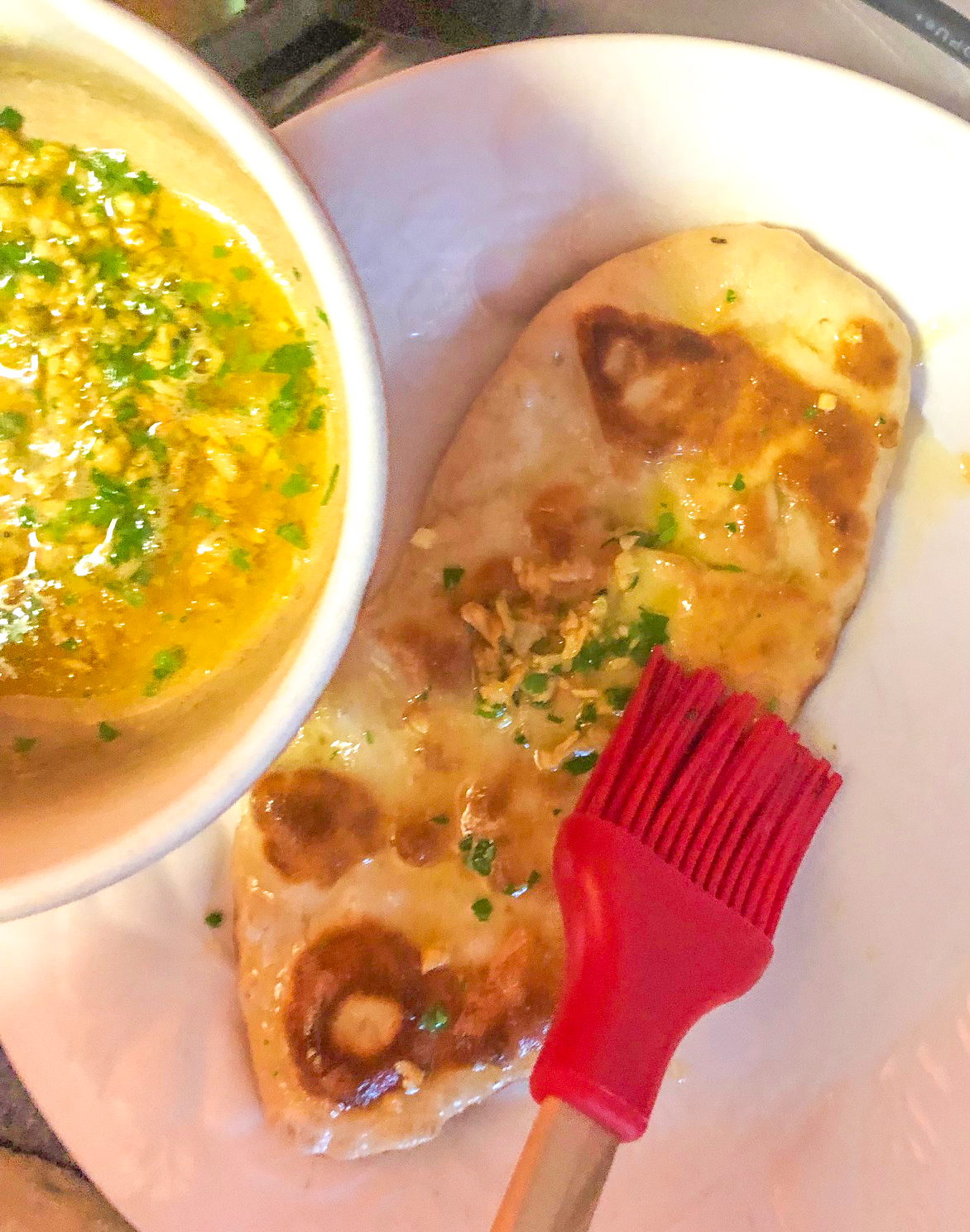GASTROTURF
Bark & Bite: The warmth and heat of a Curry Night

There’s much more snap, crackle and pop in the making of a delectable curry than there is in a bowl of Rice Crispies. If you thought it was just a matter of stirring some curry powder into a tomato-based sauce and Balvindra’s your uncle, well, you’ll find your seat at the back of the class.
Whether you start with dry spices toasting in a heavy-bottomed pot or throw the raw seeds into hot oil, you want to hear the crackling and popping before you do anything else. And when you do, that’s when you start building up your curry.
Seeds. It all comes down to seeds. Black mustard seeds. Cumin seeds. Fennel, cardamom and coriander seeds. Or, brassica nigra (black mustard seeds), jeera (cumin), soomph or barishap (fennel), elaichi/elachie (cardamom), and coriander (dhania). And cinnamon and cassia, the first gentler of flavour and better suited to sweet dishes, the second stronger and best for savoury.
The black mustard seeds hold the character of the group, and of the curry they’ll make. Cumin/jeera is the worldly member of the clan, bearing those aspects that the others might wish they could attain, like the well-travelled cousin who’s become enriched by what he’s seen and done. Fennel is the greenhorn, its flavours fresh and eager, but best kept in check by elders. Cardamom, now there’s the one that always brings on a sigh or a swoon. Cardamom is sensuous and amoral, its charms impossible to resist. But coriander seeds are the cheerleader of the pack, seamlessly bringing the flavours of all the other spices together. One sharp look from coriander and cardamom is back in line.

But it’s not only about the seeds. There’s the bark too (along with the bite), and the mother-in-law of the pack, the masala. We buy ours on any trip to Durban or environs, and keep it well sealed in a dark cupboard. No matter how many other spices you use, you still need your masala. And I’d always trust an Indian spice merchant/mixer ahead of anyone else.
And let’s not forget the divine star anise, the Queen of the Spice Cupboard. Or in my case, the spice box.

Finally, the leaves – the curry leaf and bay leaf, and finally, when time and patience and a little finesse have turned your curry and all it contains into a delectable feast, the dhania comes back, but this time in leaf form, sprinkled on top of the dish, chopped or whole. (I like to stir some chopped coriander leaves into the curry right at the last minute, before serving, and sprinkle more on top.)
Nowhere in all of the above have we yet mentioned the chilli, ginger or garlic. This trio is the guard of honour without which everything will remain a tad unwieldy and not quite right. The fire of the chilli is the central force in a curry, its centrifuge if you like, but it only works in concert with everything that swirls around it. The garlic and ginger conspire, like brothers who are inseparable but nevertheless different, to be the platform on which all of the other magic happens in the curry pot.
Not being one to follow the stern intransigence of a precise recipe if I can somehow muddle on without one, my curries have developed over the years in the way of a story that’s been brewing in your mind through the days of your life, and when you finally put pen to paper, it comes out in a way that you can’t overly control and yet which may surprise you.
I start with dry spices, these days, although I used to first braise spices in ghee or cooking oil (sunflower, canola, it matters not). And I always have a tub of ghee in the fridge. Ghee is clarified butter which you can buy at any decent Indian spice shop. I have a tub now which weighs 1.5kg and cost me R180. That’s a price, but it lasts and lasts and lasts and will see you through countless curries and convivial nights with the best of very happy friends. There’s nothing like a curry night to bring out the very best in us; telling rich tales and throwing your head right back with laughter and good Indian vibes.
But we’ve left some key ingredients behind, so let’s backtrack and catch up. There’s liquid too:
Tomato. And water. For a sizeable curry (let’s say I’m feeding eight people) I’ll add two standard tins of chopped tomatoes, 50g or so of tomato paste/puree, and the equivalent amount of water. In other words, empty the two tins of chopped tomatoes into the pot, then fill the cans up and pour that in too.
Finally, the debate some people like to have about salt. As in, do you salt a curry or not? With all those spices, do you really need salt? A good Indian cook will open their eyes in shock at the question. Of course you salt a curry! Salt lifts anything and everything it is added to, and yes, that includes a curry, no matter how many spices have gone into it.
I’m going to write my mutton curry recipe down below (using mutton rib, but knuckles or neck will do just as well, or even cubed leg if you will), but first, there’s the rice and the naan. The latter being my newest new trick, thanks to friends who’ve shown me how.
The Basmati Rice
Rice. There are many ways to make that. Most of them too time-consuming for my taste. I follow John Torode’s method, which he says he got from watching Chinese chefs make rice in Chinese restaurants in his younger days.
You need a pot with a super-tight fitting lid. Some tin foil. Rice, which you’ve washed four or more times in cold water, and drained. Then, with the wet rice in a pot, place the tip of your index finger on the top of the rice, and trickle in cold water until it reaches the first joint in your finger. Now stop pouring. Stir the rice with your (clean) finger. Put it on the heat, uncovered. Bring it to a rigorous boil. Put the lid on tightly with a sheet of tin foil between it and the pot. Now turn off the heat and go away. The rice will cook to perfection while you make the naan bread, set the table and feed the cats. If, as may happen on occasion, there is still some residual water at the bottom of the rice, finish it over a low heat until the last of the water has been absorbed/evaporated. The joy of this method is that the rice grains will be separate.
The Naan

Homemade naan, made with guidance from photographer Louis Pieterse, who too the other photos but not this one.
1.5 cups warm water (not hot)
1 Tbs sugar
6g wet yeast or 2 teaspoons active dry yeast
1 teaspoon salt
3 cups stoneground white bread flour
Combine the yeast, sugar and warm water in a bowl and leave for five minutes until it foams.
Add flour and salt, mix and turn out onto a floured surface.
Knead well and form it into a ball.
Oil a bowl lightly, put the dough in and cover with a damp towel. Leave in a warm place to rise for 40 minutes.
Turn on to a floured surface, divide into small pieces (you’ll have to judge the amount that will make one naan, given that it is rolled thinly – a few tries will give you the hang of it).
Roll each clump – aiming to get a teardrop shape – to a thickness of about 0.3cm.
Make some garlic butter: melt butter, add finely chopped garlic, stir until the garlic is lightly browned and nutty. Finely chop some coriander leaves.
Now, if you have a tandoor you will of course slap it onto the inner wall of the hot Indian oven. Or you could grill them on a lightly oil oven pan in a hot oven. But let’s save you the trouble of that. Just use a heavy frying pan, lightly oiled, over the highest heat. They cook very quickly, a minute or two on each side. Watch as they cook for bubbles to form, then lift the edge to peek underneath. You’re looking for – on the cooked side – the craters formed by those bubbles. Flip and cook the second side. Remove and drench with the garlic butter, sprinkle chopped coriander on top, and Balvindra is indeed your uncle. Much earlier in the day, however, you will have made this:
Mutton Rib Curry

Mutton Rib Curry with tomato and onion sambal, cucumber raita, and homemade naan. Photo: Louis Pieterse
2kg mutton rib pieces
Oil or ghee
1 scant Tbs cumin seeds
1 scant Tbs black mustard seeds
1 scant Tbs fennel seeds
1 tsp elachie (cardamom) seeds
1 star anise
I large onion, chopped finely
2 or 3 fat cloves of garlic
2 cm piece of very fresh ginger, peeled and minced (a grater will suffice)
2 bay leaves
1 stick cassia or cinnamon bark
1 to 3 chillies
2 tins tomatoes
2 tins cold water (the same tins)
2 heaped Tbs masala
Salt to taste but be generous, curry needs it
Dried or fresh curry leaves
Fresh dhania leaves, chopped
Choose either the wet or dry method.
If wet, heat some oil or ghee and throw in all the seeds. Wait for them to start snap-crackle-popping, and add the chopped onion, garlic and ginger, and cook them quickly, until softened, while stirring.
If the dry method: add all the seeds, cinnamon or cassia, star anise and bay leaves to a hot dry pan over a moderate heat and listen for the seeds to pop. You’ll see the mustard seeds starting to bounce around. As soon as a little smoke starts to emit, remove the star anise (I find it too hard to grind) and remove other spices to a blender and grind very finely. Heat ghee or oil and add the onion, garlic and ginger, and stir until softened, adding the ground spices once the onions are translucent, then stir for a minute or so.
Add the bay leaves and cinnamon or cassia and add the star anise you took out earlier. Pour in the two tins of tomato, fill the cans up with cold water and add. Stir in the masala. Add the mutton. Stir and salt to taste – carefully now. (You can always adjust the salting later, once the flavours have developed.)
Regarding chillies: For hotter, slice them and include the seeds; for milder, remove the seeds and only use the flesh. Or, pop them in whole and remove them (along with the bark and bay eaves) before serving, so that the curry gets the heat but not quite so much. Add them at the bay, cinnamon and tomato stage.
Simmer, covered, for at least three hours, I’d go for four. Pop back to the kitchen to stir every now and then; it does catch. If you’re adding curry leaves, do so half an hour or so before it’s done. Just before serving, stir in some chopped coriander leaves, if you like.
Once the table is set and you’ve downloaded a sitar play list, lowered the lights and lit the incense and the many candles, and all of that combined with the aromas coming from the kitchen has got everyone chilled and mellow, quickly roll out and cook the naan, drench them with the garlicky butter and sprinkle them with chopped coriander, pile them on a platter and take them through, to be followed in quick succession by the steaming (lid off) pot of curry.
There’s a little bit of heaven, right there. DM




 Become an Insider
Become an Insider